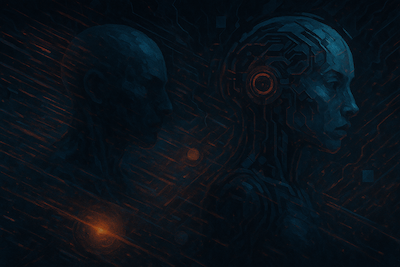When I wrote Context it seemed like our hyper-digitized commercial environment was rapidly marginalizing the role of humanity in business decisions and interactions. The central premise was that the our world was becoming computed faster than we could handle. Today, it feels like we’re bracing for impact, every day inching closer to a dystopian future that very recently seemed a few centuries away.
Take one very simple example, smartphones. The vast majority of people in the world’s most advanced economies have a smartphone and they’re glued to their screens. If you spend less than two hours on your phone you’re well ahead of most of the population as the average American spends 3.5 hours on their mobile device per day. This should concern us from many perspectives, but especially when it comes to the subjects of productivity and mental health because a large percentage of our screen time is dedicated to entertaining ourselves or simply killing time.
I recently listened to a guy on an Instagram reel suggest our addiction to screens is turning us into cyborgs. This sounded crazy. Cyborgs are technologically-altered humanoids dreamt up by creative science fiction writers. But upon deeper reflection, I appreciate the concept because every one of our digital interactions is codified into databases which grow in computational and monetary value with every incremental interaction. Additionally, we’re already feeding and relying on artificial intelligence (AI) capabilities to aid our decision-making.
Though human-machine integration is still under development (note: we’re further ahead than you think) a Brooking Institution paper suggested in 2014 that we were in a “juvenile cyborg” stage of “cyborgization” characterized as digital players who create data, collect data, and contribute to constructive integration of that data.
It’s inevitable that our collective digital interactions will continue to build value, in positive ways for the betterment of humanity as well as negative ways, particularly those which deepen inequality. It’s this latter point that concerns me the most, and more specifically within the realm of mobile entertainment based on video content. The content on the most popular mobile apps like YouTube, TikTok, and Instagram is so engrossing, interesting, and addictive it’s easy to get sucked into hour-long scrolling sessions where we end up asking “where did the time go?” The algorithms that determine what content we see are so good at keeping us glued to our screens that it’s possible not just to be perpetually entertained, but to also get the feeling we’re enriching ourselves through exposure to new ideas and information, a modern day fool’s gold.
In a time where most people are glued to devices at work and play, the people who are free from digital chains will be the leaders of the future.
The issue here is one of opportunity costs and human potential. The world’s movers and shakers are not putting in the American average of seven hours of screen time per day. In a time where most people are glued to devices at work and play, the people who are free from digital chains will be the leaders of the future. And the great thing for that small sample of the population is that they have very little competition. They are the real influencers, the ones whose actions influence societal outcomes, not social media engagement.
